Harlech Castle |
|
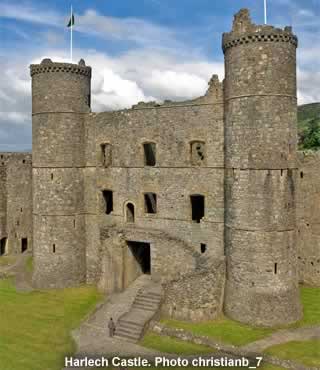 |
|||
Britain > North Wales > Harlech Castle |
||
One of the many impressive fortresses built by Edward I, shortly after he conquered Wales |
||
Listen to this article |
||
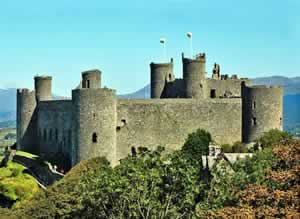 Harlech Castle Photo by rog.davies |
||
Harlech Castle was one of the many fortresses built by Edward I, shortly after he conquered Wales. Their purpose was to enforce his rule within the new territory, as well as to provide a potent symbol of English power. |
||
 King Edward I Photo in the Public Domain (PD) |
||
Even today, you can see that Harlech Castle easily achieved this aim. It stands tall on its hill, gazing out over the mountains of Snowdonia. It would have struck fear into the hearts of any would-be rebels, who must have considered it to be nearly impregnable. Attacking the castle would have seemed like a daunting prospect, but that didn't stop the Welsh from trying. Harlech's defences were put to the test many times - but they only ever failed once. This was in 1404 AD, when a man called Owain Glyn Dwr led the last great Welsh uprising in another siege. After a long, bloody campaign, the castle fell for the first time. Owain made it his headquarters, and managed to keep hold of it for nearly half a decade. His rule lasted until 1409, when it was eventually retaken by the English, putting an end to the rebellion. |
||
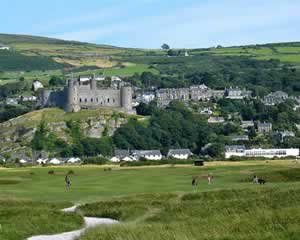 Harlech Castle Photo by tamadhanaval |
||
Later in the 15th century, Harlech was to be given its biggest test of all. During the War of the Roses, it was placed under a siege that lasted for seven years - the longest in British history. Incredibly, the castle held firm, inspiring the famous song: "Men of Harlech". This piece of music is still used today during the marches of several important military regiments. |
||
Harlech Castle is open to the public on almost every day of the year, so you can look around for yourself, and get a sense of how formidable it must have been. You'll immediately notice its concentric design, which means that the main buildings of the castle were protected by a separate outer ring of towers and battlements. |
||
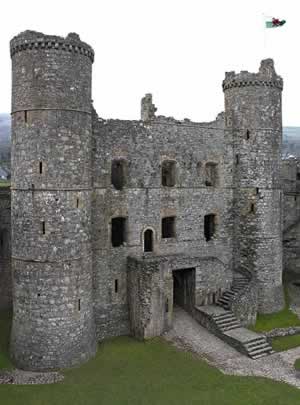 Approaching Harlech Castle Photo by Ted and Jen |
||
The battlements are surrounded on most sides by steep cliffs. This means that the only real point of attack was from the east, which is the location of the castle's huge gatehouse. If anyone wanted to enter, they would first have to avoid the arrows from the gatehouse windows, before breaking through a series of strongly reinforced doors and portcullises. Along the entire route, there were countless gaps in the ceiling, known as murder-holes, through which the castle defenders could pour hot oil, heated sand, or boiling water. |
||
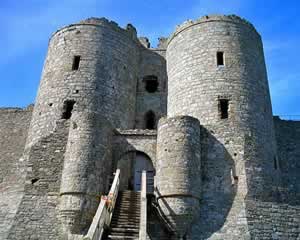 Harlech Castle East Gatehouse Photo by Gwen Hitchcock |
||
On its west side, Harlech faces the Irish Sea. This is an important point, as the castle used to receive supplies and reinforcements by boat. The waters of Tremadog Bay have now receded away from Harlech, but they once came all the way up to the cliffs beneath the castle. A fortified staircase led from the water's edge, all the way up to the fortress. |
||
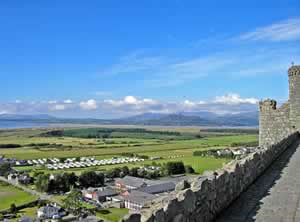 The strategic position and view from Harlech Castle Photo by Thadius Strangepants |
||
Harlech Castle wasn't only impressive from a strategic point of view. It was also an astounding technical achievement, and possibly the greatest of Edward I's castles. It was designed by the King's master architect, James of St. George. He commanded a vast army of stonemasons, blacksmiths, carpenters, quarriers, and other workmen, who all contributed towards the project. From the first stone to the very last, the construction of Harlech Castle lasted seven years. This may seem like a long time, but for a fortress of such an immense size, this is actually extremely speedy! |
||
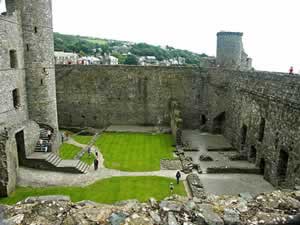 Inside the walls of Harlech Castle Photo by Kilt Bear |
||
Today, the building lies in a semi-ruined state, but most of the walls and towers stand as tall now as they did in the 13th century. |
||
|
||
Harlech Castle is open daily 9am to 5pm (shorter hours in winter). Entry costs around £4 Adults, £11 Family. Harlech Castle, Castle Square, Harlech, Gwynedd LL46 2YH. Tel: 01766 780552 |
||
|
Pocket Britain is optimised for use on a smartphone or tablet with internet access. All content is subject to copyright. All reasonable methods have been used to ensure information supplied is accurate at the time of publication. However, it is advisable to check information before relying on it. Privacy Policy |